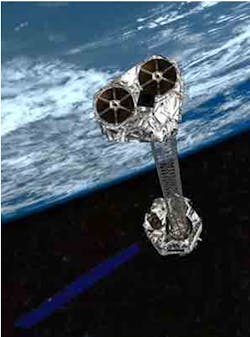X-ray imager set to launch tomorrow
Tomorrow, NASA is scheduled to launch an orbiting x-ray satellite that will produce sharp images of high-energy x-rays produced by explosive events and extreme objects such as black holes and neutron stars.
The Nuclear Spectroscopic Telescope Array, or NuSTAR, instruments were designed and built by scientists at the California Institute of Technology (Caltech), UC Berkeley and other institutions, and will be operated by scientists at UC Berkeley's Space Sciences Laboratory.
The instruments detect x-rays with energies up to 10 times greater than those detectable by NASA's orbiting Chandra X-ray Observatory and focus these high-energy x-rays to form an image.
NuSTAR, about the size of a refrigerator, is now loaded aboard a Pegasus XL rocket that is strapped beneath an L-1011 "Stargazer" carrier aircraft on Kwajalein Atoll in the central Pacific Ocean. At about 8:30 am PDT (11:30 am EDT) on June 13, at a height of 39,000 feet, the plane will drop the rocket, which will ignite its engines to carry NuSTAR into an equatorial orbit about 375 miles above Earth.
The satellite incorporates an extendable mast that is collapsed during launch but, after reaching orbit and following system checkout, will deploy in 56 locking stages to a length of 10 meters, providing a precise focal separation between two nested sets of mirrors and the detectors.
-- by Dave Wilson, Senior Editor, Vision Systems Design
